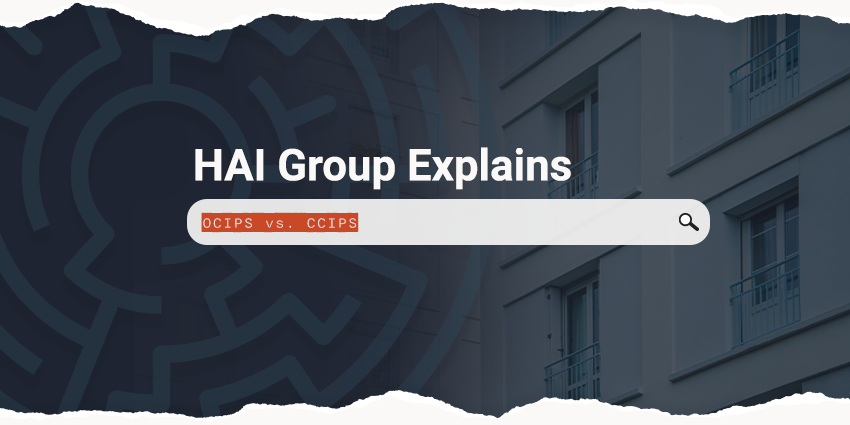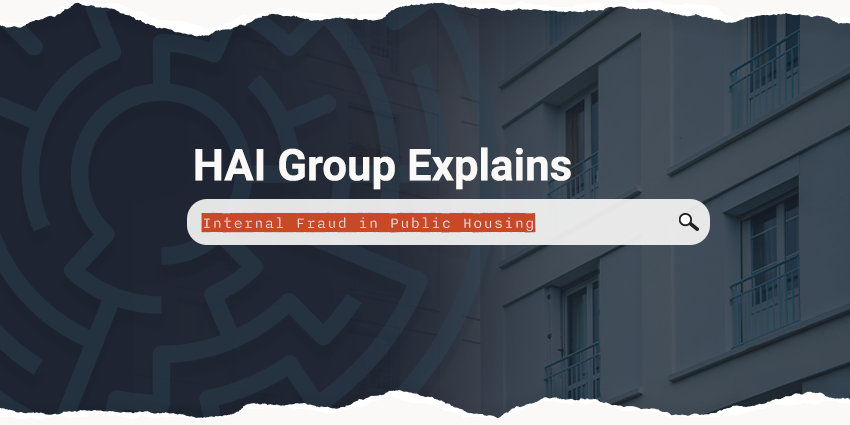Housing organizations embarking on significant construction endeavors may encounter unfamiliar insurance products designed to mitigate construction-related risks. One such product is wrap-up insurance, a specialized form of construction liability coverage offered in two primary variations—owner-controlled insurance programs (OCIPs) and contractor-controlled insurance programs (CCIPs).
In this article, we offer an insightful overview of wrap-up insurance and delineate the crucial distinctions between OCIPs and CCIPs.
What is wrap-up insurance?
.png?width=592&height=889&name=Brown%20City%20Photo%20Travel%20Blog%20Graphic%20(1).png) Wrap-up insurance is a specialized liability insurance product commonly utilized for larger-scale construction projects characterized by extensive subcontractor involvement and substantial costs. These policies offer comprehensive liability coverage for the property owner, general contractor, and often most subcontractors, all bundled under a single product—hence the term "wrap-up." This consolidated approach eliminates the necessity for each party involved in the project to procure and maintain their individual liability insurance policies.
Wrap-up insurance is a specialized liability insurance product commonly utilized for larger-scale construction projects characterized by extensive subcontractor involvement and substantial costs. These policies offer comprehensive liability coverage for the property owner, general contractor, and often most subcontractors, all bundled under a single product—hence the term "wrap-up." This consolidated approach eliminates the necessity for each party involved in the project to procure and maintain their individual liability insurance policies.
The advantages of wrap-up insurance can include:
1. Uniform coverage: All project stakeholders are encompassed within a single policy, mitigating potential coverage gaps that may arise from varying limits and terms across multiple individual policies.
2. Continuity of coverage: Wrap-up insurance can extend coverage beyond project completion, safeguarding against liabilities such as construction defects that might emerge years later. Coverage often persists through the statute of limitations for construction defect exposures, which varies by state.
3. Cost-effectiveness: Wrap-up policies generally prove more economical compared to the cumulative expenses of individual policies covering each party separately.
4. Enhanced policy limits: Typically, wrap-up policies offer higher coverage limits compared to individual policies, affording greater protection against potential liabilities.
5. Reduced litigation: By consolidating coverage under a single wrap-up policy, potential disputes, and disagreements among contractors over responsibility for incidents leading to claims are minimized, thus averting costly litigation.
6. Streamlined claims process: With all project participants covered under a unified wrap-up policy, the claims process is streamlined and simplified, reducing the likelihood of conflicts and project delays associated with fragmented coverage arrangements.
OCIP vs. CCIP: Which should your housing organization consider?
In the realm of housing development, where costs are carefully managed against investment returns amidst fluctuating construction expenses, insurance represents a controllable factor. As previously mentioned, wrap-up insurance, particularly OCIPs, often proves more cost-effective than individual policies due to bundled coverages. Moreover, OCIPs afford housing organizations greater control over costs, claims, work quality, and job site safety compared to conventional insurance coverages.
Advantages of OCIPs for housing organizations:
1. Greater Flexibility: Housing organizations retain the autonomy to tailor coverage to match their specific needs, risk profile, and project requirements. This includes the selection of insurance brokers, policy limits, and terms.
2. Control Over Claims Process: By overseeing the claims process, housing organizations can choose legal representation (if stipulated in the policy terms) and maintain involvement throughout, ensuring transparency and awareness of claim status.
3. Risk Management Oversight: Housing organizations wield significant influence over risk management practices on-site, enabling the implementation of centralized safety programs covering all contractors and subcontractors. This proactive approach can mitigate claims and minimize losses, thereby bolstering cost-control efforts.
Disadvantages of OCIPs:
1. Administrative Burden: The adoption of OCIPs necessitates increased administrative responsibilities, such as procuring coverages and managing claims, which can consume valuable time and resources.
2. Potential for False Claims: The broad coverage provided to subcontractors under OCIPs, coupled with their exemption from premium responsibilities, may inadvertently incentivize false injury claims unrelated to on-site activities.
In contrast, CCIPs delegate insurance policy management, claims processing, and risk management oversight to general contractors, offering a different dynamic for housing organizations.
Disadvantages of CCIPs for housing organizations:
1. Cost savings from wrap-up insurance policies typically benefit contractors rather than housing organizations.
2. Lack of control over specific aspects of the insurance policy, including carrier selection, policy terms, and limits, limits housing organizations' ability to tailor coverage to their exact needs.
3. The absence of direct influence over the claims process and selection of legal representation may impede housing organizations' ability to actively manage claims outcomes.
4. Limited oversight over job site safety and risk management, as these responsibilities fall primarily within the purview of the general contractor rather than the housing organization.
Bottom line
The choice between OCIPs and CCIPs hinges on housing organizations' priorities regarding cost control, risk management, administrative involvement, and the desired level of oversight throughout the construction process.
Don't let uncertainty derail your construction projects. Take proactive steps to secure comprehensive coverage and streamline your insurance processes. Reach out to HAI Group's Account Services team now and embark on your construction endeavors with confidence!
This article is for general information only. HAI Group® makes no representation or warranty about the accuracy or applicability of this information for any particular use or circumstance. Your use of this information is at your own discretion and risk. HAI Group® and any author or contributor identified herein assume no responsibility for your use of this information. You should consult with your attorney or subject matter advisor before adopting any risk management strategy or policy.
HAI Group® is a marketing name used to refer to insurers, a producer, and related service providers affiliated through a common mission, management, and governance. Property-casualty insurance and related services are written or provided by Housing Authority Property Insurance, A Mutual Company; Housing Enterprise Insurance Company, Inc.; Housing Specialty Insurance Company, Inc.; Housing Investment Group, Inc.; and Housing Insurance Services (DBA Housing Insurance Agency Services in NY and MI).






%20(5).png)